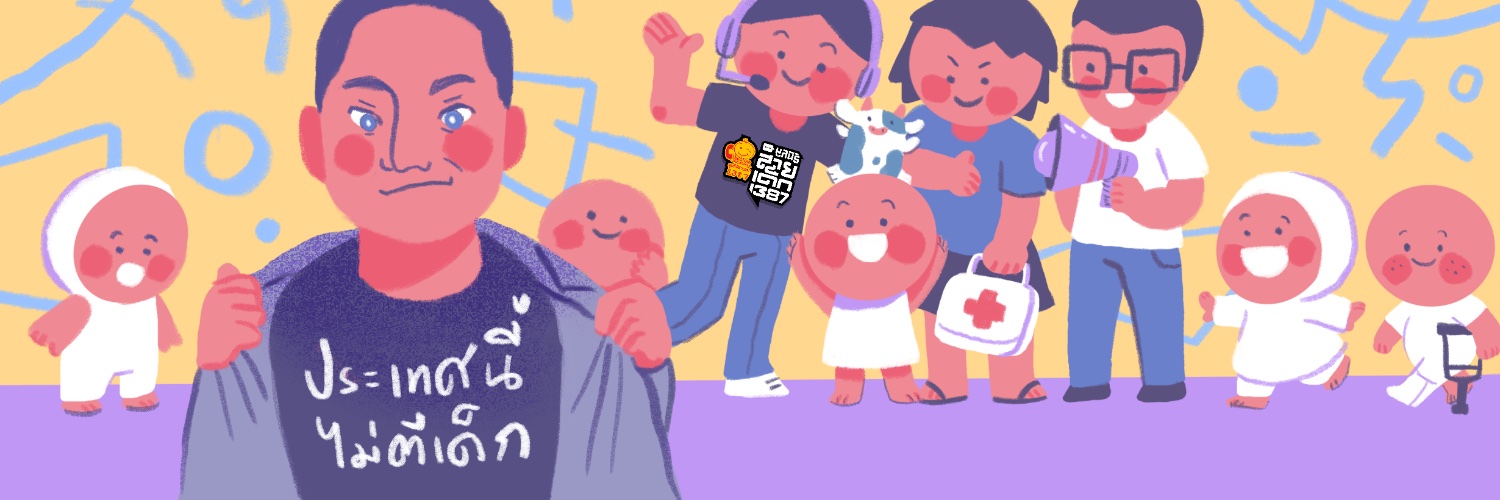

Childline Thailand Foundation
@saidek1387
☎️ 1️⃣3️⃣8️⃣7️⃣ โทรฟรี 2️⃣4️⃣ ชั่วโมง
รับฟังทุกปัญหาและพร้อมให้คำปรึกษาเด็กอายุไม่เกิน 18 ปี ด้วยใจ 24 ชั่วโมง
Joined January 1970
197 Following 22.5K Followers

Childline Thailand Foundation@saidek1387
2025.02.24 02:00
“กักขัง” ไม่ใช่คำตอบ – เด็กควรได้รับโอกาส ไม่ใช่กรงขัง
การกักขังเด็กไม่ควรเป็นทางเลือกแรก หรือเป็น "ทางเลือกสุดท้าย" ด้วยซ้ำ เด็กบนท้องถนนและเด็กชายขอบสังคมเมืองมักตกอยู่ในวังวนของปัญหา ไม่ใช่เพราะพวกเขาเลือกเดินทางผิด แต่เพราะพวกเขาไม่มีทางเลือกมากพอ การนำพวกเขาเข้าสู่ระบบกักขัง ไม่เพียงแต่ทำลายโอกาสในการศึกษาและพัฒนาตนเอง แต่ยังสร้างบาดแผลทางจิตใจที่ยากจะลบเลือน พวกเขาถูกตราหน้าและถูกผลักให้ออกจากสังคม มากกว่าที่จะได้รับโอกาสในการปรับปรุงตัว
.
ภาครัฐมีมาตรการรองรับเด็กที่เข้าสู่กระบวนการยุติธรรมอยู่บ้าง เช่น การจัดตั้งสถานพินิจเยาวชนในบางพื้นที่ แต่ระบบเหล่านี้ยังขาดความครอบคลุม และไม่สามารถตอบโจทย์การแก้ปัญหาที่ต้นเหตุได้ รัฐยังคงให้ความสำคัญกับการควบคุมตัวเด็ก มากกว่าการฟื้นฟูและให้อีกทางเลือกในการใช้ชีวิต เด็กที่พ้นโทษออกมายังคงเผชิญกับอคติและโอกาสที่ถูกปิดกั้น ซึ่งผลักพวกเขากลับไปสู่วงจรเดิมของความรุนแรงและความเสี่ยง
.
สิ่งที่รัฐยังละเลยคือการขยายมาตรการทางเลือกแทนการกักขังให้ครอบคลุมมากขึ้น รวมถึงการลดระยะเวลาการกักขังเด็กให้น้อยที่สุด เด็กไม่ควรถูกขังเป็นเวลานานโดยไม่มีโอกาสแก้ตัว การพัฒนาโครงการฟื้นฟูที่มีประสิทธิภาพ เช่น การแนะแนวอาชีพ การช่วยเหลือทางจิตใจ และการสนับสนุนทางสังคม จะช่วยให้เด็กสามารถกลับมาใช้ชีวิตในสังคมได้อย่างมีศักดิ์ศรี
.
การกักขังเด็กไม่ใช่จุดสิ้นสุดของปัญหา แต่มันคือจุดเริ่มต้นของความเหลื่อมล้ำที่ลึกขึ้น ทางออกที่แท้จริงคือการให้โอกาส ไม่ใช่โทษทัณฑ์ เราต้องเลือกว่าจะขังพวกเขาไว้กับอดีต หรือจะเปิดโอกาสให้พวกเขาเดินไปสู่อนาคตที่ดีกว่า
.
The detention of children should not be the first option—or even the last resort. Street children and marginalized youth often find themselves trapped in cycles of hardship, not because they chose the wrong path, but because they lack sufficient choices. Placing them in detention systems not only strips them of opportunities for education and self-development but also inflicts deep psychological scars that are difficult to heal. They are stigmatized and pushed further to the margins of society, rather than being given the chance to rehabilitate and reintegrate.
.
The government has implemented some measures for children in the justice system, such as establishing juvenile detention centers in certain areas. However, these systems remain inadequate and fail to address the root causes of the problem. The state continues to prioritize child detention over rehabilitation and alternative solutions. Once released, these children still face prejudice and limited opportunities, which often push them back into the same cycle of violence and risk.
.
What the government has overlooked is the need to expand alternative measures to detention and minimize the time children spend in custody. Children should not be incarcerated for long periods without the chance to correct their mistakes. Developing effective rehabilitation programs, such as vocational training, psychological support, and social assistance, would enable them to reintegrate into society with dignity.
.
Detaining children is not the end of the problem; it is the beginning of deeper inequality. The real solution lies in providing opportunities, not punishment. We must decide whether to lock them in their past or open doors for them to walk toward a better future.
.
#สายเด็ก1387# #saidek1387# #ChildlineThailand# #เส้นทางขวางฝัน# #เด็กเร่ร่อน# #เด็กบนท้องถนน# #เด็กชายขอบ# #ให้โอกาส# #ส่งต่อพลังใจ# #เปลี่ยนมุมมองสังคม# #VWEF# #ยุติการเลือกปฏิบัติ# #ยุติโทษที่รุนแรงต่อเด็ก#

0






































